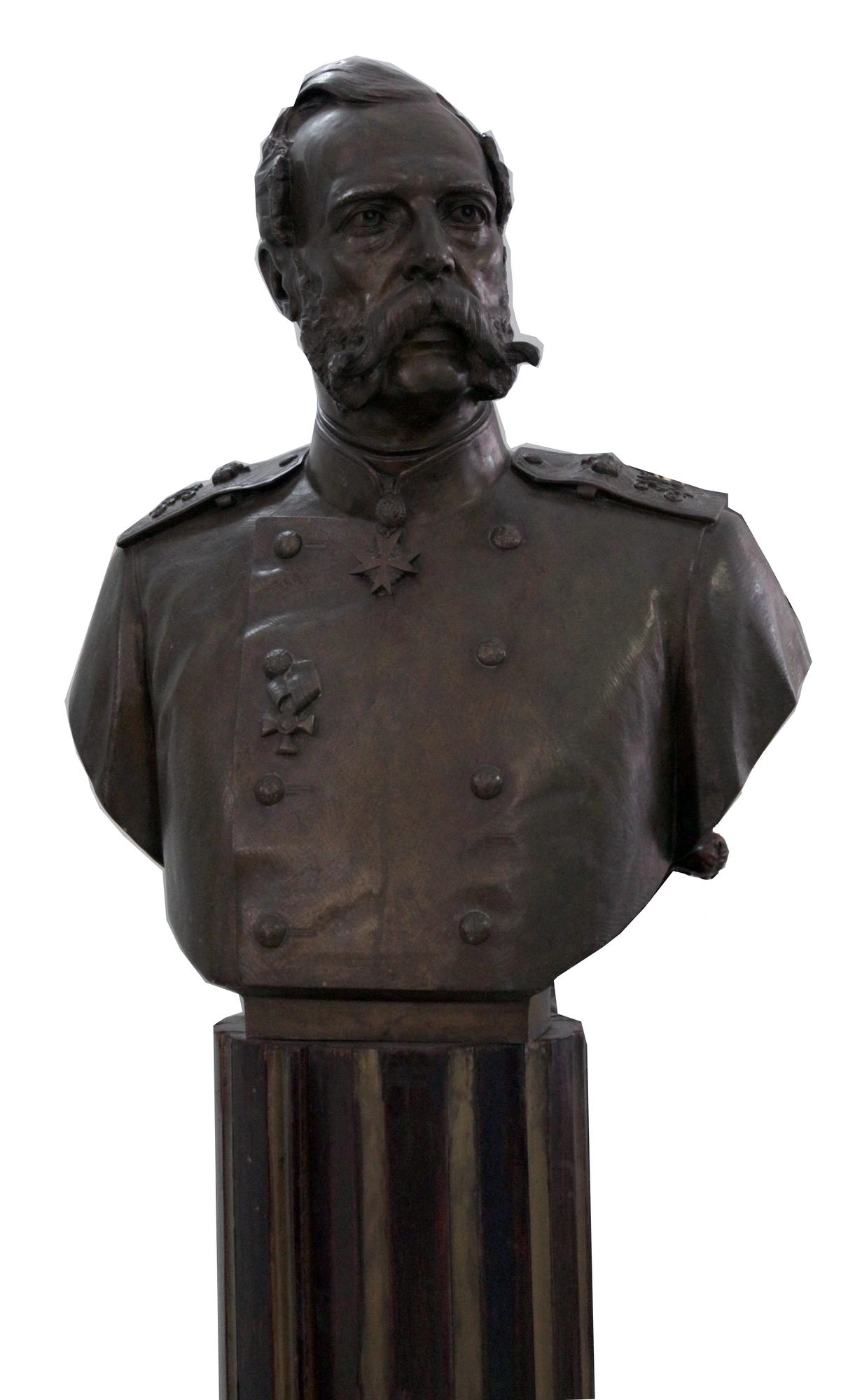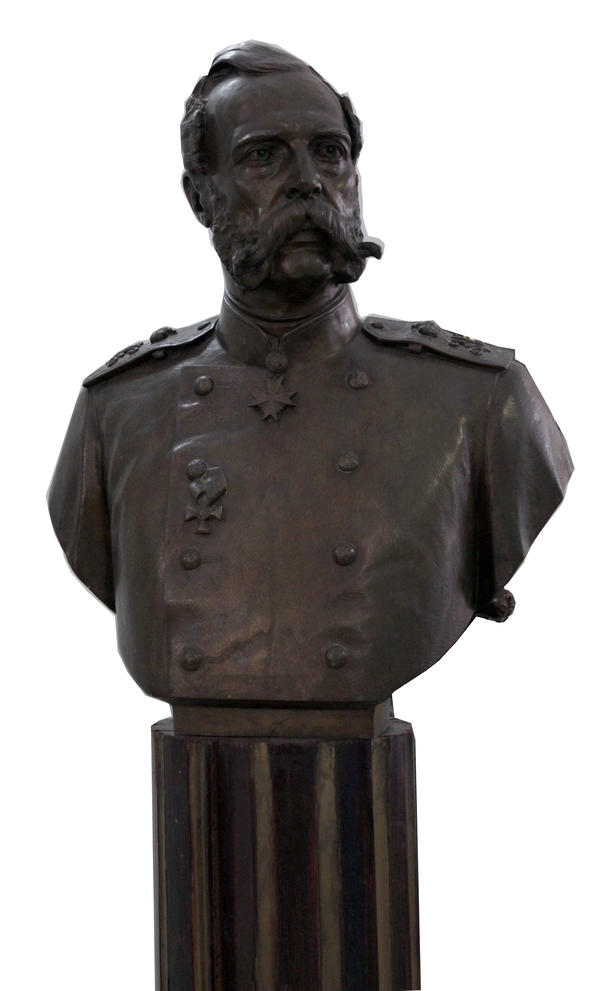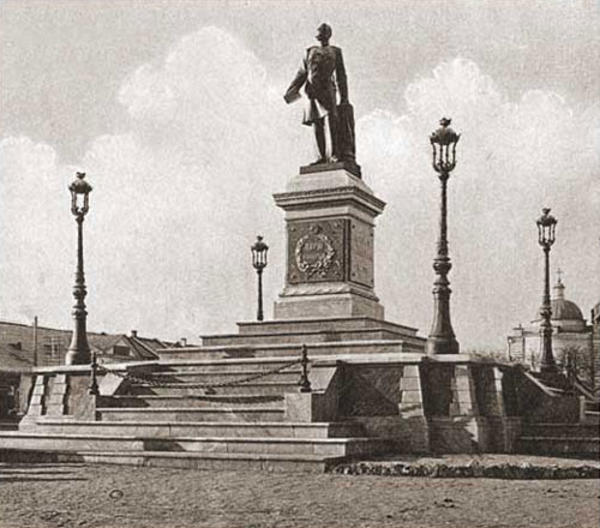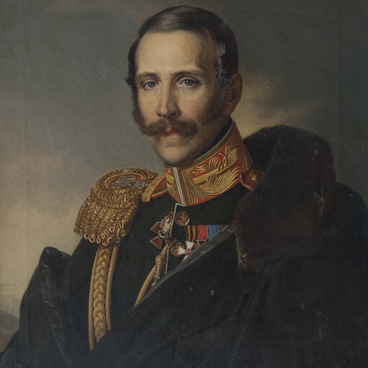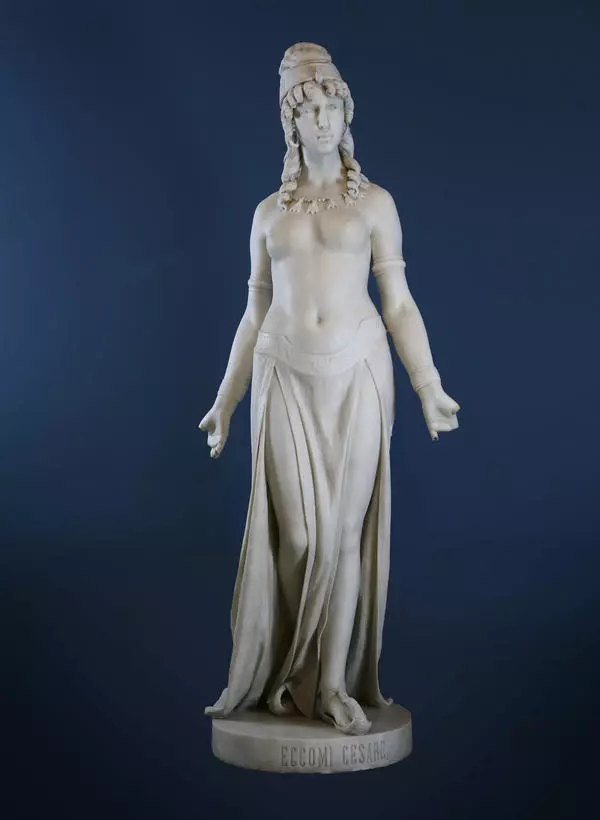The bronze bust of Alexander II, Emperor of All Russia, Tsar of Poland and Grand Prince of Finland, was sculpted by Mikhail Popov in 1883, two years after the tragic death of the monarch.
Alexander II, son of Tsar Nicholas I Romanov, was born in Moscow in 1818. Little Alexander was heir presumptive to the throne of Russia, so his birth was celebrated by a salvo of 201 rounds of artillery fire. At the age of 13, Alexander was accorded the title of His Imperial Highness, Tsesarevich and Grand Prince; at 16, he took the oath and was inducted in the Senate.
After completing his education in 1837, Alexander, together with his court and his mentor, the poet Vasily Zhukovsky, went on a six-month tour of Russia. The route stretched over 12,000 versts (8,000 miles), from Western Siberia to Smolensk and Elisavetgrad (currently the town of Kropivnitsky in central Ukraine). In July 1837, the tour took Alexander to the city of Tambov, where he spent one day and one night, visiting an exhibition of industrial products of the province and attending a ball in the evening. Alexander also visited Tambov on two other occasions: in 1850 and 1851.
Alexander II was crowned in 1856. He is remembered as a reformer tsar, his momentous reforms affecting the whole population of the empire: he was responsible for the emancipation of the Russian serfs, financial and judicial reforms, reforms of secondary and higher education and of local self-government. The emancipation of the serfs and victory in the war for the liberation of Bulgaria from Ottoman Turkey made him known as ‘the Liberator’.
The Emperor survived six assassination attempts. The seventh was successful: on 1 March 1881, Ignacy Hryniewiecki, a terrorist from the ‘People’s Will’ (Narodnaya Volya) radical organization, threw a bomb at Alexander. Mortally wounded, the Emperor died later that day in the Winter Palace.
Alexander II, son of Tsar Nicholas I Romanov, was born in Moscow in 1818. Little Alexander was heir presumptive to the throne of Russia, so his birth was celebrated by a salvo of 201 rounds of artillery fire. At the age of 13, Alexander was accorded the title of His Imperial Highness, Tsesarevich and Grand Prince; at 16, he took the oath and was inducted in the Senate.
After completing his education in 1837, Alexander, together with his court and his mentor, the poet Vasily Zhukovsky, went on a six-month tour of Russia. The route stretched over 12,000 versts (8,000 miles), from Western Siberia to Smolensk and Elisavetgrad (currently the town of Kropivnitsky in central Ukraine). In July 1837, the tour took Alexander to the city of Tambov, where he spent one day and one night, visiting an exhibition of industrial products of the province and attending a ball in the evening. Alexander also visited Tambov on two other occasions: in 1850 and 1851.
Alexander II was crowned in 1856. He is remembered as a reformer tsar, his momentous reforms affecting the whole population of the empire: he was responsible for the emancipation of the Russian serfs, financial and judicial reforms, reforms of secondary and higher education and of local self-government. The emancipation of the serfs and victory in the war for the liberation of Bulgaria from Ottoman Turkey made him known as ‘the Liberator’.
The Emperor survived six assassination attempts. The seventh was successful: on 1 March 1881, Ignacy Hryniewiecki, a terrorist from the ‘People’s Will’ (Narodnaya Volya) radical organization, threw a bomb at Alexander. Mortally wounded, the Emperor died later that day in the Winter Palace.
